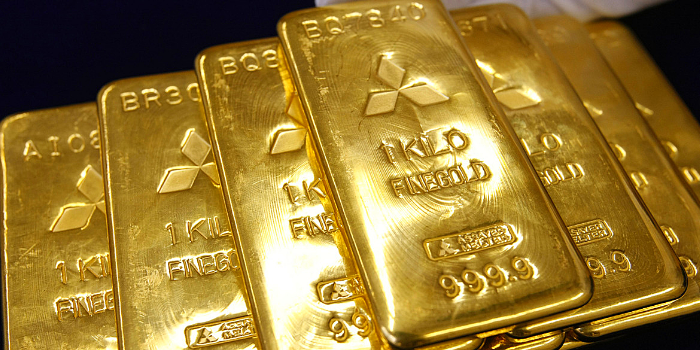
The Case For Gold at $2,000 in 2019
Last February, gold jumped to a 10-month high, marking the peak of a buying surge that began mid-August of last year.
This surge was an impressive multi-month streak. There hasn’t been anything like it since 2016.
As with all uptrends, the rise in gold prices pulled back. Currently, the retracement is nearly 38.2% from peak to trough (trends can pull back as deep as 62% before traders begin getting worried).
Amidst all the economic and geopolitical fears afflicting the market--factors such as the US-China trade dispute, Brexit, US national debt, and others that helped drive the current surge, to begin with--it makes you wonder if safe haven demand is enough to keep gold moving in its current bullish trajectory.
But if you step back and take in the bigger picture, you’ll see that gold is currently trading at the top end of a five-year trading range.
Should stock market volatility cease or inflation ease up, some analysts believe that gold prices may struggle at the top end of this trading range for some time.
One thing we shouldn’t forget, however, is that gold faces supply challenges.
Inventories are tight, and any uptick in demand would further deplete the current physical supply.
M&A in the Gold Mining Sector Indicates Shortages
Just take a look at the recent mergers and acquisitions in the gold mining sector, for instance, Barrick Gold Corp’s $18 billion proposal to buy Newmont Mining Corp, for instance.
Mining companies, such as Barrick, are having a hard time finding more gold reserves to mine. Hence, the mergers and acquisitions to access more gold reserves.
A headwind for gold production, this shortage and difficulty can be a significant tailwind for gold prices.
On top of this, central bank demand for gold is much higher than it has been for over the last 50 years.
Record-Breaking Gold Demand Among Central Banks
In 2018, central banks bought a record of 651.5 metric tons of gold, according to the World Gold Council.
Driving this massive buying spree is the need for central banks to diversify the composition of their reserves against the backdrop of geopolitical and economic uncertainty.
Needless to say, when such allocations increase, central banks transform gold’s monetary characteristics.
In other words, the central bank perspective toward gold shifts once again from “physical commodity” to “sound money.”
In contrast to what many investors might think, these central bank gold purchases aren’t a “new thing” either. Central banks have been net buyers since 2010!
And according to a recent World Gold Council survey, one-fifth of the central banks participating in the survey intend to ramp up their gold purchases in the coming year.
Think about it: central banks are colossal market players.
If a central bank were to make (what it would consider) a “small purchase,” that purchase would still be massive enough to cause a significant upsurge in gold prices.
And when central banks go on a gold buying spree, it’s not because they’re bullish on gold, it’s because they fear a plunging dollar...and gold is the only way to hedge a catastrophic fall in dollar value.
With the US’ national debt of $22 Trillion, and its government’s seeming lack of will to rein-in its spending impulse, it’s no surprise that central banks around the world are getting nervous about their US Treasury holdings.
It also makes the world’s central banks question the long-standing notion that US Treasuries are “risk-free” and robust.
Given the scale of uncertainties and risks, central bank and institutional demand for safe-haven gold is likely to continue and increase.
And given the convergence of central bank demand in addition to the immense buying power of each individual bank, a forecast of gold climbing to $2,000 within the next 24 months is far from unrealistic.
Right now, COMEX gold has pulled back to $1,285. The price of $2,000 is still far away.
At its current price level, gold represents not only “sound money” and a perfect hedge against economic uncertainty; it represents a timely opportunity for growth.
It’s time to pull the trigger and buy.













